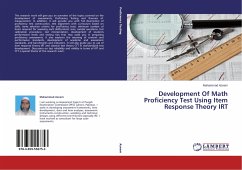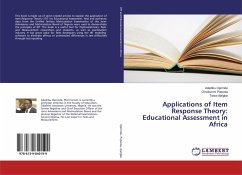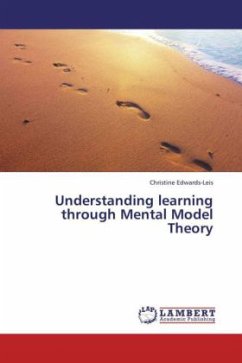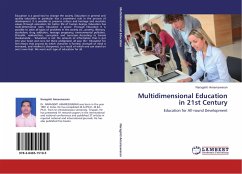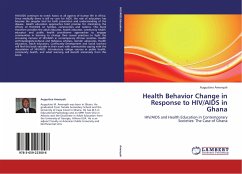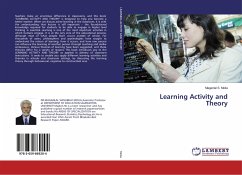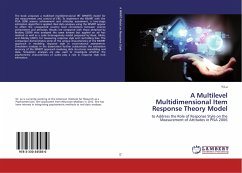
A Multilevel Multidimensional Item Response Theory Model
to Address the Role of Response Style on the Measurement of Attitudes in PISA 2006
Versandkostenfrei!
Versandfertig in 6-10 Tagen
43,99 €
inkl. MwSt.

PAYBACK Punkte
22 °P sammeln!
The book proposes a multilevel multidimensional IRT (MMIRT) model for the measurement and control of ERS. To implement the MMIRT with the PISA 2006 science achievement and attitudes assessment, a two-stage estimation algorithm is applied. Real data analyses using the MMIRT appear to affect the unexpected country level correlations between science achievement and attitudes. Results are compared with those obtained by Buckley (2009) who analyzed the same dataset but applied an ad hoc method as well as a scale heterogeneity model proposed by Rossi, Gilula, and Allenby (2001), for measuring respon...
The book proposes a multilevel multidimensional IRT (MMIRT) model for the measurement and control of ERS. To implement the MMIRT with the PISA 2006 science achievement and attitudes assessment, a two-stage estimation algorithm is applied. Real data analyses using the MMIRT appear to affect the unexpected country level correlations between science achievement and attitudes. Results are compared with those obtained by Buckley (2009) who analyzed the same dataset but applied an ad hoc method as well as a scale heterogeneity model proposed by Rossi, Gilula, and Allenby (2001), for measuring response style and controlling bias. The comparison demonstrates some of the unique characteristics of the MMIRT approach in modeling response style in cross-national assessments. Simulation analyses in the dissertation further substantiate the estimation accuracy of the MMIRT approach involving data structures resembling real data. Simulation analyses are also used to investigate whether the psychometric characteristics of scales play a role in response style trait estimation.



